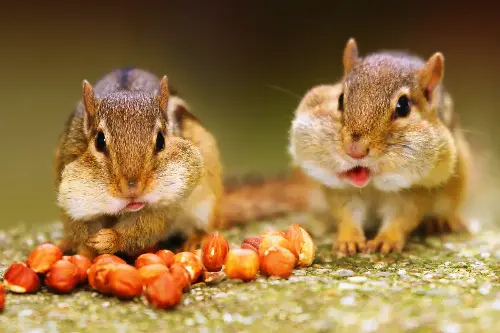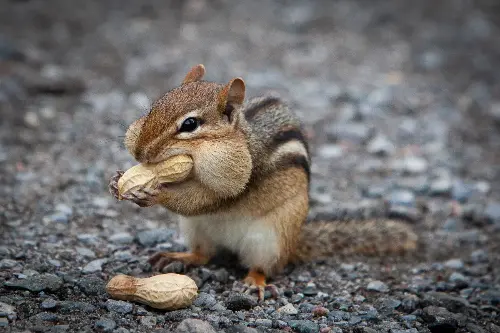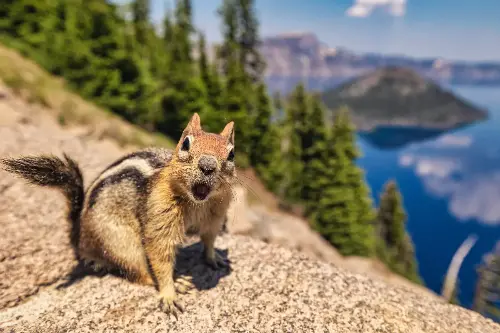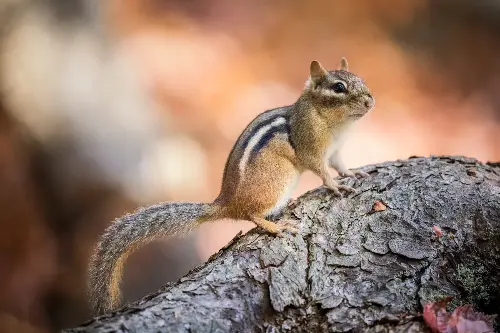Alvin, the mischievous and musical chipmunk, has entertained audiences for decades with his high-pitched voice and animated escapades. Yet beyond the Hollywood portrayal lies the fascinating world of the real chipmunks, small, sprightly creatures that inhabit our forests, parks, and even backyards.

Chipmunks, members of the Sciuridae family, are small, striped rodents related to squirrels. There are 25 species of chipmunks, with the majority found in North America, except for the Siberian chipmunk which is found primarily in Asia. One of the most common species is the Eastern chipmunk, which populates the forests and urban areas of the eastern United States.
These charismatic creatures are easily recognizable by their ruddy brown fur and distinctive stripes. They have five dark stripes on their backs, with the central one extending forward onto the head. These stripes are not just for show – they serve as camouflage, breaking up the chipmunk's outline among the forest's dappled light and shadow.
Chipmunks are quintessentially tied to the changing seasons. They are most active during the early morning and late afternoon, especially during spring and fall. These times of day and periods in the season also coincide with the least amount of aerial predators, like hawks, which pose a significant threat to these tiny rodents.
When foraging, chipmunks fill their cheek pouches – which can stretch to three times the size of their heads – with food such as seeds, nuts, berries, and grains to transport back to their burrows. Surprisingly, chipmunks also have an omnivorous side; they have been known to eat small frogs, insects, and bird eggs.

The burrows they create are marvels of animal engineering. Chipmunks construct elaborate systems of chambers and tunnels, which include spaces for sleeping, storing food, and discarding shells and feces. These burrows can be up to 3.5 meters in length and even have separate entrances and exits as escape routes. To keep predators out, chipmunks are careful not to leave any dirt at the burrow's entrance.
Contrary to the communal nature suggested by their animated counterparts, real chipmunks are relatively solitary. Outside of the breeding season, which takes place twice a year, chipmunks prefer to keep to themselves. They are highly territorial and communicate their boundaries through loud, bird-like chirps.
During the breeding season, chipmunk communication becomes more complex. Males may make more noise to establish dominance or to attract females. Gestation lasts about a month, and a female chipmunk can give birth to a litter ranging from two to eight pups. Unlike many mammals, chipmunks are born blind and hairless, dependent on their mother's care for the first several weeks of life.

Perhaps one of the most fascinating behaviors of chipmunks is their method of hoarding food for the winter. Known as scatter hoarding, chipmunks spread their food caches throughout their territory instead of keeping it all in one place. This strategy decreases the risk of losing the entire stockpile if discovered by a predator or another chipmunk. However, chipmunks do not truly hibernate; instead, they enter a state called torpor, where they periodically wake to feed on their stored provisions.
Chipmunks have also impacted their ecosystems. As seed dispersers, they play a significant role in forest regeneration. Their foraging habits help to propagate plants and contribute to seedling growth. Their digging aerates the soil and their waste acts as fertilizer. In this way, chipmunks contribute to the health of their habitat.

The real lives of chipmunks are filled with challenges and survival strategies that are as captivating as any animated tale. The next time you hear the rustle of leaves or the chirp of a chipmunk's call, take a moment to appreciate these energetic little characters, who are not just cute faces but vital cogs in the wheel of the forest ecosystem.
To coexist with chipmunks in urban areas, it is wise to be considerate of their natural behaviors. Avoid feeding them, as this can disrupt their foraging patterns and cause them to become too reliant on humans. Instead, enjoy their presence from a distance and appreciate the intricate role these creatures play in the environment.
In essence, chipmunks are a lot more than their fictional counterparts. With complex behaviors, intricate habitats, and an indispensable role in their ecosystems, chipmunks are truly fascinating creatures worth admiring for more than just their cute antics. Whether they are bustling about preparing for winter or quietly raising their young underground, chipmunks are an integral part of the wildlife tapestry, forever bustling and forever captivating.
